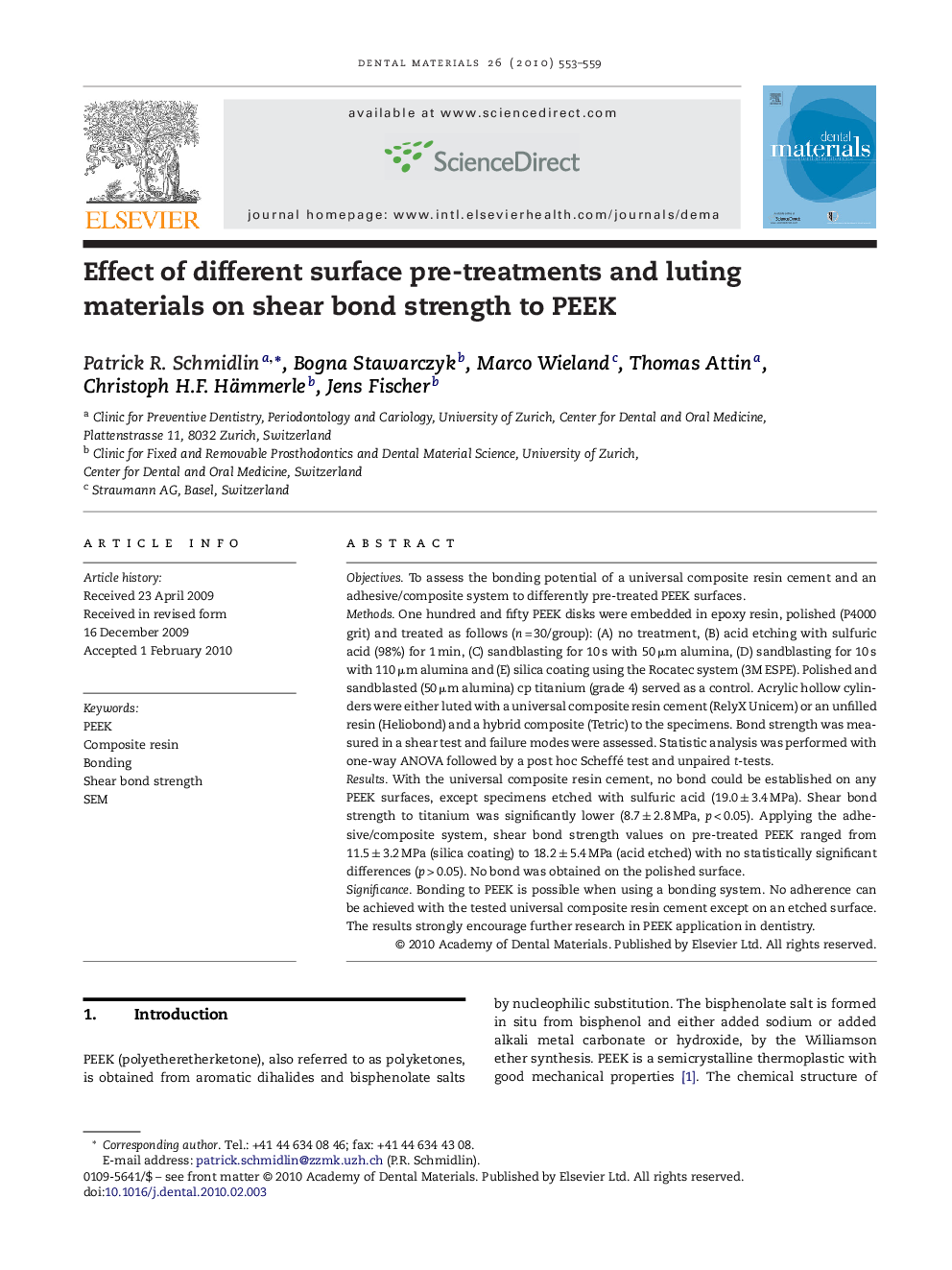| Article ID | Journal | Published Year | Pages | File Type |
|---|---|---|---|---|
| 1421835 | Dental Materials | 2010 | 7 Pages |
ObjectivesTo assess the bonding potential of a universal composite resin cement and an adhesive/composite system to differently pre-treated PEEK surfaces.MethodsOne hundred and fifty PEEK disks were embedded in epoxy resin, polished (P4000 grit) and treated as follows (n = 30/group): (A) no treatment, (B) acid etching with sulfuric acid (98%) for 1 min, (C) sandblasting for 10 s with 50 μm alumina, (D) sandblasting for 10 s with 110 μm alumina and (E) silica coating using the Rocatec system (3M ESPE). Polished and sandblasted (50 μm alumina) cp titanium (grade 4) served as a control. Acrylic hollow cylinders were either luted with a universal composite resin cement (RelyX Unicem) or an unfilled resin (Heliobond) and a hybrid composite (Tetric) to the specimens. Bond strength was measured in a shear test and failure modes were assessed. Statistic analysis was performed with one-way ANOVA followed by a post hoc Scheffé test and unpaired t-tests.ResultsWith the universal composite resin cement, no bond could be established on any PEEK surfaces, except specimens etched with sulfuric acid (19.0 ± 3.4 MPa). Shear bond strength to titanium was significantly lower (8.7 ± 2.8 MPa, p < 0.05). Applying the adhesive/composite system, shear bond strength values on pre-treated PEEK ranged from 11.5 ± 3.2 MPa (silica coating) to 18.2 ± 5.4 MPa (acid etched) with no statistically significant differences (p > 0.05). No bond was obtained on the polished surface.SignificanceBonding to PEEK is possible when using a bonding system. No adherence can be achieved with the tested universal composite resin cement except on an etched surface. The results strongly encourage further research in PEEK application in dentistry.
